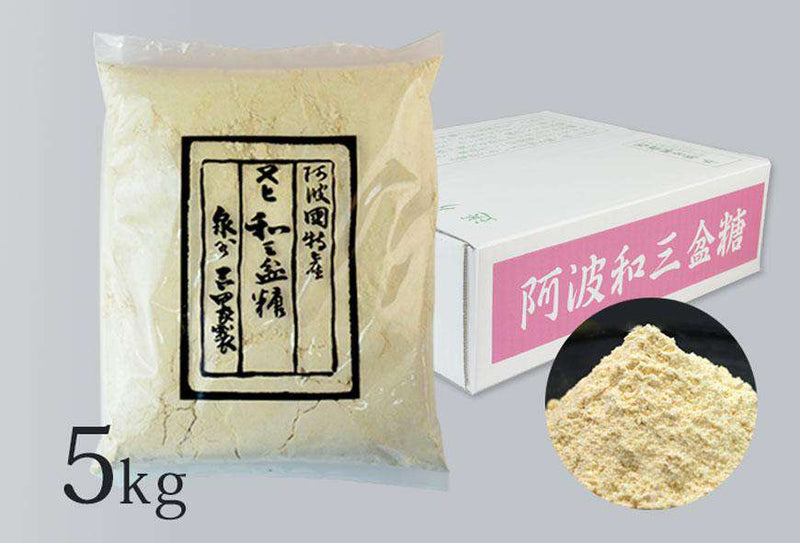
Awa Wasanbon Sugar (Special From Okada's Sugar Refinery) Business Size 5kg
In stock
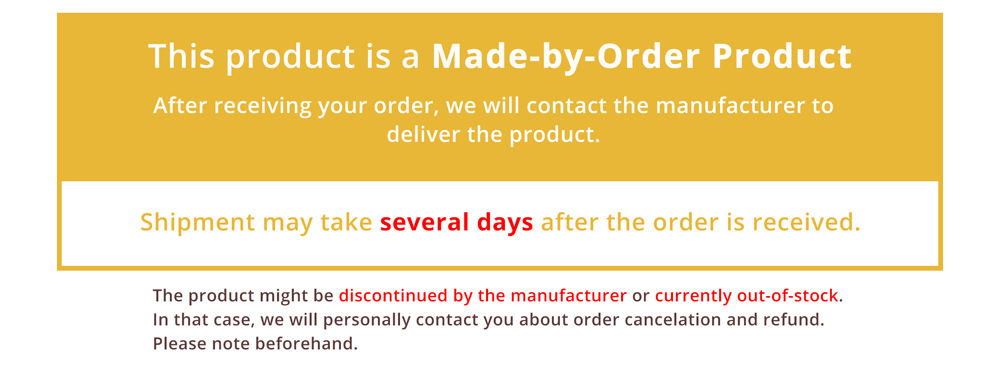
About Awa Wasanbon Sugar
(Special from Okada’s Sugar Refinery)

The freshly produced wasanbon sugar (和三盆, known as Japanese fine-grained sugar), directly packaged and ship to you to use as raw material for sweets and other recipes.
Like the regular sugar, you can add it to coffee or tea, use it for boiled dishes, for soba or sushi rice, make pastries such as sponge cake or castella, or use it for any other dishes.
You can also enjoy it along with grapefruit and strawberries. Make it a sugar-glazed fruit to add variation into everyday snacks.
Also, if you use it for dishes like oshiruko (sweet red bean soup), omelet, sukiyaki, and such, the taste will get stronger.
This product is carefully made by keeping the traditional method from two hundred years ago. Enjoy the natural and elegant sweetness made by a dedicated sugar refinery manufacturer. Click to read the message from the manufacturer >
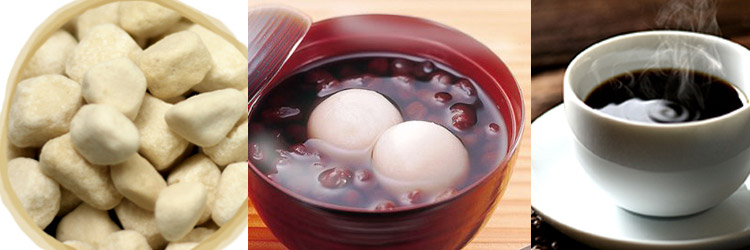
Because we have lots of orders for Awa Wasanbon Sugar, we made a made-by order business size of 5kg package.
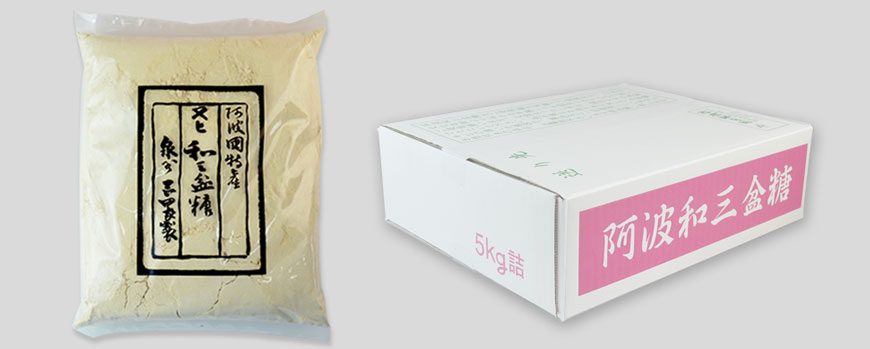
Use Wasanbon Sugar to Make Delicious Red Bean Paste
Anko (Red Bean Paste) a paste prepared by boiling adzuki bean (red bean), mashing, and sometimes sweetening them with sugar. There are two most common types of Anko: tsubuan and koshian.
The only ingredients you'll need will be Azuki Bean and Wasanbon sugar.
Read more on how to use Wasanbon sugar to make delicious red bean paste in our article below:
How to Make Anko (Red Bean Paste)
Anko is a very well-known and widely-used paste in Japan. You can enjoy it as it is, or use it for Japanese sweets filling, such as dorayaki, taiyaki, mochi, daifuku, etc. This recipe is gathered by Kawashima Japan Store under the advice of Japanese sweets manufacturer. Let's make the delicious Anko sourced from its professional maker!
Read More
Customer's Reviews

Fine grains that melts quickly when you put it in your mouth, with elegant sweetness.
I was impressed that I think this is the best Wasanbon sugar. It is very delicious.

Unlike other sugar, it has an elegant and delicate taste.
It is really delicious when put in coffee, but as other people said, it is recommended to use for sweets, too. The kinako mochi made with this sugar is really delicious.

I made boiled Anko with this.
Unlike the usual white sugar, it tasted very elegant, I was really surprised.

With delicate sweetness, it will melt away quickly when you put it in your mouth.
I do not want to use lots at once, so I mix it with coffee or tea or put it on toast. And the result is very great! It matches!
Staff's Reviews
The Kawashimaya staffs tasted this sugar.
Wasanbon is the type of sugar with a fluffy texture and soft color.
You should try putting it in your mouth first. It melts quickly in the mouth, and you can taste the elegant sweetness that spreads into your mouth.
I am surprised by its delicious taste.
I ate too much of it even though I planned to use it for making sweets. It's a type of sugar that you would like to taste once in a lifetime.

About Wasanbon Sugar
Wasanbon sugar is a traditional goods cultivated at Tokushima and Kagawa Prefecture, and is made from bamboo sugarcane (also known as small millet).
It is one of the few domestic sugars being made without using much machinery.
Awa wasanbon sugar is called so because it’s produced at ‘country of awa’ which is part of Tokushima Prefecture. It’s mainly made in the northern side of Itano District, Tokushima Prefecture and Kamiita Town, in the southern slope of Sanuki Mountains.
It is said that the bamboo sugarcane has been settled in this region for over two hundred years.
Before the war, many domestic sugars were made, but when inexpensive refined sugar was introduced after outbreak of war has been imported, the domestic sugars manufacturers got declined.
Now, it is mainly used as sugar for Japanese confectionery.

Raw Material of Wasanbon Sugar: Bamboo Sugarcane
One of the reasons that Wasanbon sugar is different from common sugar is its raw material difference.
Raw materials of Wasanbon sugar are white sugar or granulated sugar you are using at home, as well as the sugarcane. It's quite the same if you say it sugarcane, but it's used in wasanbon sugar, so it's quite a different variety of sugarcane. It is quite different from sugarcane that cultivated in Taiwan, Cuba, and Okinawa.
For example, it is characterized by its relatively low height and considerably thin diameter.
At the growth stage, the height is only about 2m with the thickness only around one's adult index finger.
It is obviously disadvantageous considering the yield per unit area, because it's not either tall or thick. But the taste become the reason why this sugarcane is still cultivated.

The method of cultivating this sugarcane "bamboo sugar" is also quite different from that of sugarcane in the south.
Grown sugar cane is harvested with root every harvest period in December. There is a small sprout at the node of sugarcane, we leave some of the harvested part, and in April, we cut the part of the section into an appropriate length and plant it.
The approximate annual work of the sugarcane farmers is as follows:
● In early April, dig the place for planting.
● In early April, starts planting.
● Weeding and watering several times.
● In mid-November, bury the seeds for next year.
● In late November to December, harvesting.
● In December, sugar refinery received the sugarcane.
Manufacturing Process of Wasanbon
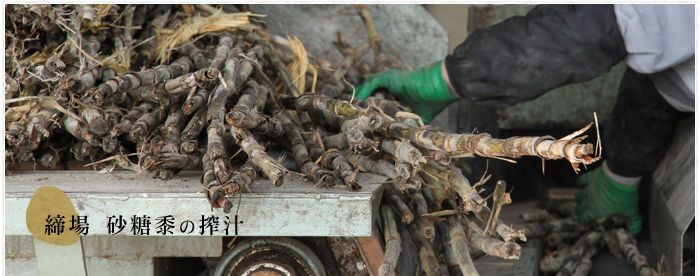
1. In December, the sugarcane will get squeezed.
The harvested sugarcanes that were carried to sugar factories. Then, it is squeezed by a specialized machine. We call the place to squeeze the sugarcane "shimeba."
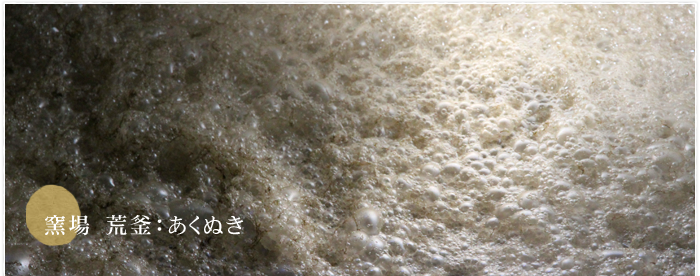
2. "Kamaba," or the Process of Boil Down the Squeezed Juice from the Sugarcane.
Kamaba is divided into several stages. The first is to remove the astringent taste of the sugarcane juice by boiling it. It was done in a kettle.
3. Rinsing Process.
The sugarcane juice extracted in the kettle is a light-brown colored liquid. Therefore, before we boil the juice, we will do the rinsing process to make the color clear.

4. Cook with nakagama (inner kettle), and agekama (raising kettle) and cool it down.
Boil the clear sugarcane juice with the inner kettle and the raising kettle. Nakagama is simply a boiling kettle, and agekama is a raising kettle or finishing kettle. Check the boiled-up sugarcane in the kettle, and when it looks like it’s a ‘good rise,’ it will be transferred to the next cooling kettle, and we will start the cooling process.

5. Cooling process and Crystallization in the Cooling Kettle.
As we stir it while cooling it in the cooling kettle, it will gradually lose its thickness, but it still has heat. So, to make it cooler, we will transfer it into a pot ceramic called ‘cooling kettle, leave it cool there and let it crystallize.
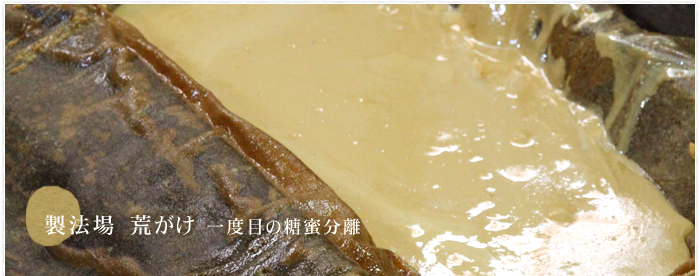
6. First step of molasses detachment.
After the white sugar is made, we will let it be at least for one week or more, and the next step is the ‘sharpening’ process. The sharpening process is the unique purification process of Wasanbon sugar.
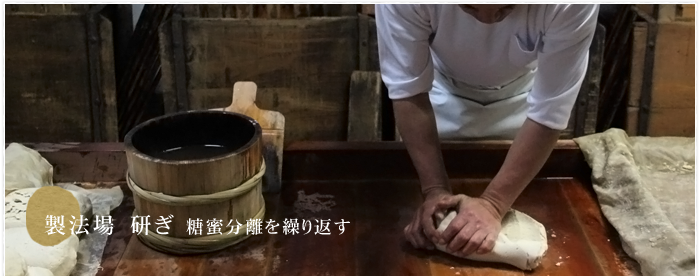
7. Sharpening Process, repeat the molasses detachment.
After the first sharpening process, the sugar will be somewhat whiter, and we will take it out from the ‘push tank’ the next day.
8. Pulverization (Crushing) and Drying.
The Wasanbon sugar that has finished the sharpening process is sifted and dried on the same day. It’s very dangerous to leave the wet Wasanbon sugar because when the temperature is high, the fermentation odors can be smelly due to the molasses inside the sugar. Depends on the circumstance, the molds may also get stick.
Message from the Manufacturer
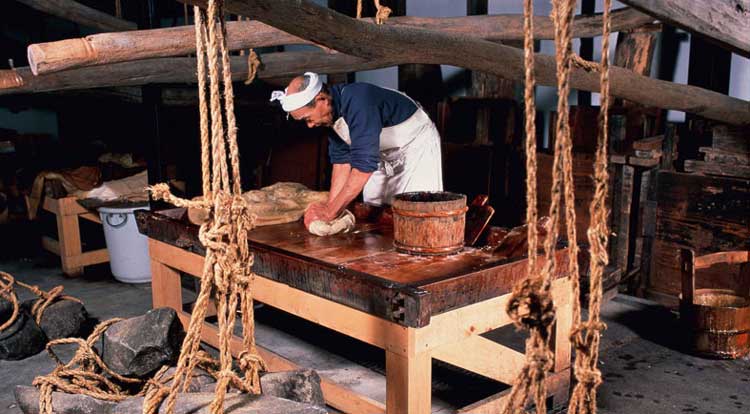
We started making Wasanbon sugar in the country of Awa in the 5th year of the Anei Era (1776). It was almost two hundred years ago.
The history lies with the great effort of life and death by Maruyama Tokuya, a man who wishes for the happiness of his home, Kamiita Town.
With the effort of Hachisukashi clan, the name of Awa Wasanbon spreading all over Japan.
The Okada Sugar Refinery has kept the handmade tradition since then, still producing the natural taste by the recipe of two hundred years ago.
Awa Wasanbon sugar is a natural product that contains the warmth of nature, grace, and deliciousness from our fingertips.
You have to try its wonderful taste someday!
Awa Wasanbon Sugar Variety
Also available in different packages. Check their product pages below!
Product Details
| Name | Wasanbon sugar (Awa Wasanbon Sugar) |
|---|---|
| Ingredients | sugarcane, sugar |
| Quantity | 5kg |
| Preservation Method | Avoid any moisture, please store in room temperature |
| Manufacturer | Okada Genkyou Limited Company |
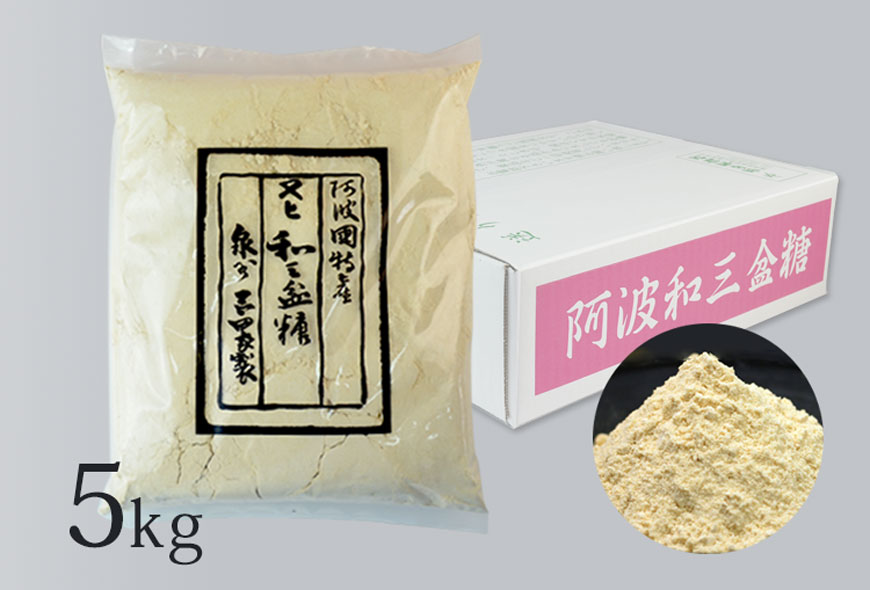
Why shop with KAWASHIMAYA?
- We sell only authentic and high-quality products
- 100% Made in Japan products are as listed
- Organic and non-GMO products are as listed
- All products are new and have long expiry date
- All products are handled directly from our warehouse in Tokyo, Japan
- Easy and secure payment options with CC or PayPal
- Safe and insured international shipping methods
- English and Japanese customer support by email
- Wholesale discount prices available for selected products
- Find insightful articles from KAWASHIMAYA Blog
- Get exclusive discounts for KAWASHIMAYA Newsletter subscribers
- Easy shop on KAWASHIMAYA Amazon USA





